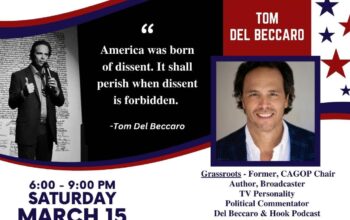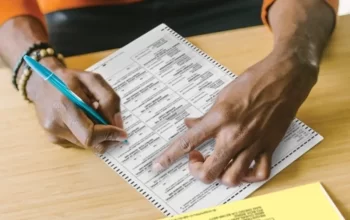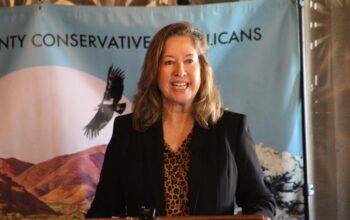Berkeley schools have been run like a Marxist outpost for decades. And, for decades it has been a failure, especially for people of color. That was the Marxist goal, to keep people of color dumb, so they would need government to survive.
“This enduring gap is one reason why the Berkeley Unified School District, which serves over 9,000 students in 17 schools, is exploring the idea of reparations for its students. In 2022, white students made up 41% of the population, Hispanic students accounted for 22%, Black students accounted for almost 13% of the population and 8% were Asian students. Nearly 31% were considered socioeconomically disadvantaged.
State test scores released in October show disparities remain in the district. Only 19% of Black students met math standards, while 74% of white students, 65% of Asian students and 43% of Hispanic students did.
If these are not Marxist schools, then they are racist schools—run by Marxists, racists and Democrat bigots. This is what happens to minorities under one Party rule.
Berkeley Public Schools Begin Talks on Reparations. Will Students Be Paid?

Written by Ida Mojadad, SF Standard, 4/27/23 https://sfstandard.com/education/berkeley-public-schools-begin-talks-on-reparations-will-students-be-paid/?utm_source=The+San+Francisco+Standard&utm_campaign=638bb8d1c1-EMAIL_CAMPAIGN_2022_06_21_02_54_COPY_01&utm_medium=email&utm_term=0_f81e82e2a3-638bb8d1c1-523240057
From de facto segregation to uneven academic outcomes for Black and Brown students, America’s public schools remain glaring examples of inequality. This is arguably truer in affluent communities than elsewhere, as the pernicious effects of policies like redlining mean ZIP codes determine neighborhood resources.
Despite efforts to offer extra resources for low-income students and students of color, achievement gaps remain stubborn. Laura Babitt, a mother of three who went to Berkeley schools and now serves as a school board member, saw the difference that extra educational investment from relatively well-to-do families made for students.
“Part of the reason there is such a gap is because of how parents are able to supplement their children’s education,” Babitt said. “When we put in these wonderful, intentional, direct programs to specifically target African American and Latinx students—the two groups that have fallen through these opportunity holes—everyone rises. Money matters, and it plays a part.”
This enduring gap is one reason why the Berkeley Unified School District, which serves over 9,000 students in 17 schools, is exploring the idea of reparations for its students. In 2022, white students made up 41% of the population, Hispanic students accounted for 22%, Black students accounted for almost 13% of the population and 8% were Asian students. Nearly 31% were considered socioeconomically disadvantaged.
State test scores released in October show disparities remain in the district. Only 19% of Black students met math standards, while 74% of white students, 65% of Asian students and 43% of Hispanic students did.
After the 2020 murder of George Floyd, community members began urging the district to consider reparations, citing systematic disparities for Black students. Payments would be directed to Berkeley’s public school students.
Exactly how all that may be decided, however, will remain behind closed doors for some time. A task force began meeting this week, charged with coming up with recommendations to report to the superintendent at an unspecified time, the district’s spokesperson said in an email. Board members may rotate, but the remaining composition is unknown and its meetings, scheduled through November, are not open to the public.
As with other reparations efforts, the question advocates ask isn’t whether this could right centuries of wrongs with money, but how much money and how specifically to dole it out.
Looking to atone for the past, California’s state reparations task force determined in September that the state could owe hundreds of thousands of dollars to Black residents descended from enslaved Americans. The group outlined the state’s history of housing discrimination and health disparities, as well as discrepancies in educational opportunities and incarceration rates.
Across the bay from Berkeley, San Francisco’s own African American Reparations Advisory Committee recommended $5 million payments to eligible Black adults, eliminating personal debt and tax burdens, and guaranteed annual incomes—proposals that turned the committee into a national lightning rod.
Opponents say that because San Francisco never endorsed slavery, it’s not fair to put the cost burden on 21st century taxpayers. Nationally, a 2022 Pew Research Center found that 68% of respondents opposed reparations, with Democrats divided and Republicans overwhelmingly against the idea.
Although California never codified forms of enslavement, the state has a long and unique history of discrimination, something the state task force detailed in a 500-page study. In 1874, California’s Supreme Court ruled that school segregation was legal, and in 1979, voters passed a proposition blocking desegregation efforts tied to busing. De facto segregation persists in schools today, with those attended by predominantly Black and Latino students receiving fewer resources, the report said.
As with previously hot-button issues that have become increasingly mainstream—marriage equality, say, or recreational cannabis—advocates point to the role of California and the Bay Area in pushing the envelope.
“You really need to do it from the top down,” said James Taylor, a politics professor at the University of San Francisco who sits on the city’s reparations committee. “We have precedent, but there’s no perfect model. Everything is going to be tailored to injuries at the local level.”
Berkeley, with its long tradition of assertive liberalism, has an educational record that may prove useful. Sheryl Davis, executive director of the San Francisco Human Rights Commission, which the advisory committee reports to, said busing would be smart to analyze. While other schools were forced to desegregate by court order, Berkeley Unified voluntarily implemented a busing plan to integrate schools in 1968.
Like Vice President Kamala Harris, Davis was one of those students, boarding a bus as a kindergartener. She recalled that she had to wait in front of a house belonging to a busing opponent. But her bus driver, a local icon with a gold tooth, greeted the students with a warm “What’s cooking?”
“I remember her probably more than I remember some of my teachers,” Davis said. “If they start to unpack and drill down the result of busing. […] Students who went to schools in the neighborhood had a very different experience.”
To Davis, Berkeley’s initiative displayed a much-needed intentionality.
“I’m hoping that it makes sure people aren’t slipping through the cracks,” Davis said. “It becomes easy for people who don’t fit perfectly into one place. It’s not going to be fixed in one place. We’re trying ways to get this done in preparation for the scrutiny and fights that I’m sure happens at any level.”
The Rev. Amos Brown seconds the call for the Berkeley task force to do its research with care. He is the chair of San Francisco’s National Association for the Advancement of Colored People, and sits on both the city and state reparations committees. Brown thinks the ultimate way to achieve educational equity is reparations in the form of properly funded schools.
“Make all schools first-class, that’s all—and spend the money to do it,” Brown said. “The San Francisco schools on the east side are underfunded. The proof of the pudding will be in the outcomes.”
California’s task force proposed adding Black students to the state’s school funding formula, which could net hundreds of millions of dollars. Among its other suggestions were eliminating racial bias in standardized testing, offering free tuition to California colleges and universities and systemically reviewing disciplinary records.
In its draft report, San Francisco’s task force called for the San Francisco Unified School District to establish an Afrocentric K-12 school, commit to pathways for Black students, invest in recruiting Black educators, create partnerships to end the “school-to-prison pipeline” and distribute funding for schools in disrepair, among several recommendations specific to education.
“Although we have made progress in our efforts to reach each and every SFUSD student, we know that there are still persistent gaps in access, experiences and outcomes of our Black students in our district, city and country,” said spokesperson Laura Dudnick in an email.
Whether other school districts will follow suit remains to be seen. But advocates say that in every jurisdiction over the years, decisions were made that harmed Black residents traced back to slavery in the United States.
“Every institution has been impacted by the enslavement of African people,” Babitt said. “Every institution in America has its role to play in atoning for these harms. That’s what reparations is about.
“Why not Berkeley?” she asked. “Why not now?”



